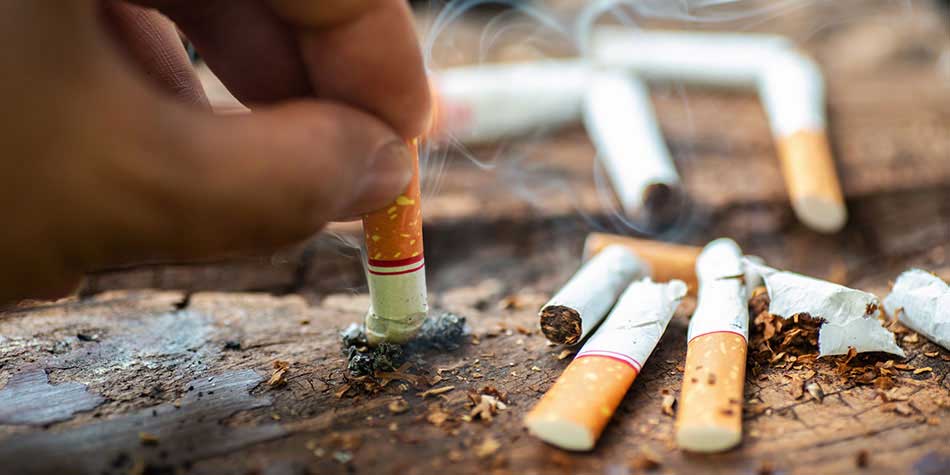
Where there’s smoke, there will be thirdhand smoke
For years, we’ve all been aware of the fact that secondhand smoke is harmful. Now, another risk from cigarettes is coming to light—there doesn’t even have to be smoke in the air for there to be a health hazard.
Thirdhand smoke is residue that stays long after someone actively smokes in a home or enclosed area. And with time, these harmful remnants become more and more toxic. Find out what potential risks may be lurking around you and how to protect yourself from thirdhand smoke.
Thirdhand smoke sticks around long after smoking
Research shows that the toxic build-up left from habitual smoking can remain on surfaces for weeks, months—even years. Exposure to the hidden toxins in thirdhand smoke leaves people at risk, even if they don’t smoke.
4 Hazards of thirdhand smoke
- Causes lung cancer
- Damages DNA
- Reacts with the environment to form new toxins
- Resists traditional cleaning methods and sticks around to cause harm
Who is most at risk for thirdhand smoke exposure?
- Non-smokers, particularly those who live with smokers
- Children, especially young ones who regularly touch objects and put their hands in their mouths
- Babies and infants, since they spend more time on the floor where thirdhand smoke builds up
A toxic cycle that keeps getting worse
Not only does thirdhand smoke absorb into surfaces where cigarettes are smoked, it also mixes with natural gases in the environment to create yet even more risks. Chemicals found in thirdhand smoke react with things like ozone and fine particles found in the air—and produce toxins you’d never know were even there.
Touching—and breathing in—this hidden residue can cause harm to the body just like smoking or secondhand smoke can. Thirdhand smoke can damage DNA, cause cancer, and raise the risk of heart disease.
How to clear thirdhand smoke from your home
These steps can reduce thirdhand smoke buildup and reduce some of the toxins from re-entering the environment:
- Wash walls and ceilings thoroughly with detergent and very hot water. Without doing so, nicotine can seep through even several coats of paint.
- Be sure to wear gloves and use multiple clean rags to avoid pushing the residue around. Wash, rinse, and repeat!
- Once walls are washed, repaint with 2 or 3 coats of fresh paint.
- Remove carpeting and padding, and wash floors before replacing carpet.
- Replace curtains, blinds, and window coverings. This step can prevent thirdhand smoke from being re-released into the air.
Refer to the checklist provided by the American Lung Association. Follow the checklist to see what you need to clean or replace, seal and paint, or remove and replace to make your home smoke-free once and for all.
Treating specific items throughout your home
- Clean and replace if needed:
- Floors
- Baseboard & trim
- Walls
- Ceiling
- Doors & door openings
- Door chime
- Shelving
- Closet organizer & rods
- Cabinetry-inside & out
- Countertops
- Ceramic tile
- Outlets & switches
- Light fixtures
- Window units, frames, & sills
- Range & hood
- Refrigerator
- Dishwasher
- Sinks
- Toilets
- Bathtubs & showers
- Vanity
- Mirrors
- Blinds
- Exhaust Fans
- Ceiling Fans
- Seal and Paint
- Baseboards & trim
- Doors & door openings
- Window frames & sills
- Shelving
- Vanity
- Cabinetry
- Floor underlayment (seal for odor control)
- Remove and Replace
- Carpet
- Carpet pad
- Curtains
- Vinyl
- Smoke or burn-damaged countertops, linoleum, furnishings, etc.
- Other
- Prepping & masking for painting
- Ozone treatment
- Thermal fogging
- Floor protection (plastic film)
$webqFacilityNumber
Need a Physician?